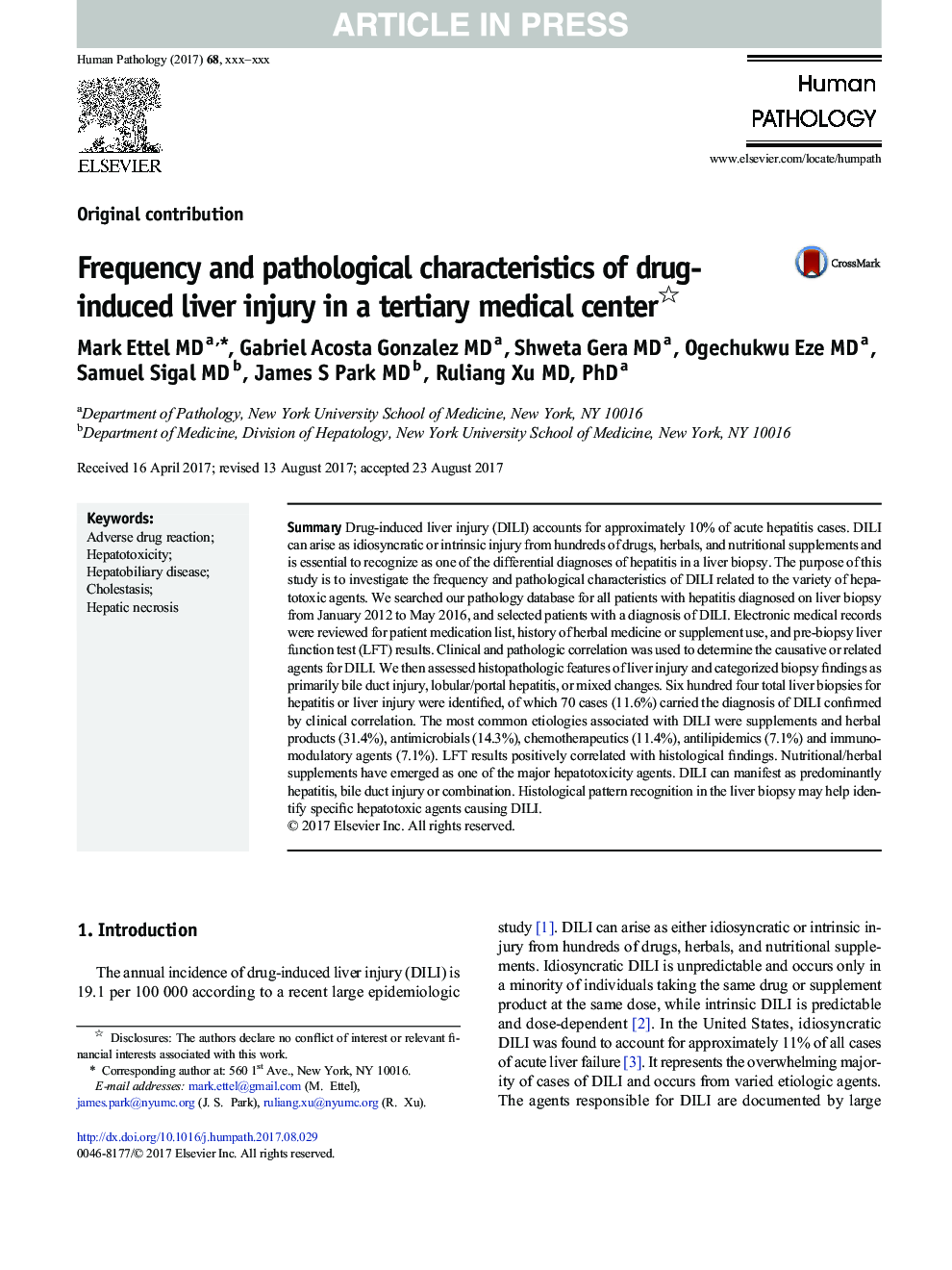| Article ID | Journal | Published Year | Pages | File Type |
|---|---|---|---|---|
| 5716094 | Human Pathology | 2017 | 7 Pages |
â¢Most common etiologies associated with DILI were supplements/herbal products.â¢LFT results positively correlated with histological findings.â¢Histological pattern on biopsy may help identify causative hepatotoxic agents.
SummaryDrug-induced liver injury (DILI) accounts for approximately 10% of acute hepatitis cases. DILI can arise as idiosyncratic or intrinsic injury from hundreds of drugs, herbals, and nutritional supplements and is essential to recognize as one of the differential diagnoses of hepatitis in a liver biopsy. The purpose of this study is to investigate the frequency and pathological characteristics of DILI related to the variety of hepatotoxic agents. We searched our pathology database for all patients with hepatitis diagnosed on liver biopsy from January 2012 to May 2016, and selected patients with a diagnosis of DILI. Electronic medical records were reviewed for patient medication list, history of herbal medicine or supplement use, and pre-biopsy liver function test (LFT) results. Clinical and pathologic correlation was used to determine the causative or related agents for DILI. We then assessed histopathologic features of liver injury and categorized biopsy findings as primarily bile duct injury, lobular/portal hepatitis, or mixed changes. Six hundred four total liver biopsies for hepatitis or liver injury were identified, of which 70 cases (11.6%) carried the diagnosis of DILI confirmed by clinical correlation. The most common etiologies associated with DILI were supplements and herbal products (31.4%), antimicrobials (14.3%), chemotherapeutics (11.4%), antilipidemics (7.1%) and immunomodulatory agents (7.1%). LFT results positively correlated with histological findings. Nutritional/herbal supplements have emerged as one of the major hepatotoxicity agents. DILI can manifest as predominantly hepatitis, bile duct injury or combination. Histological pattern recognition in the liver biopsy may help identify specific hepatotoxic agents causing DILI.
